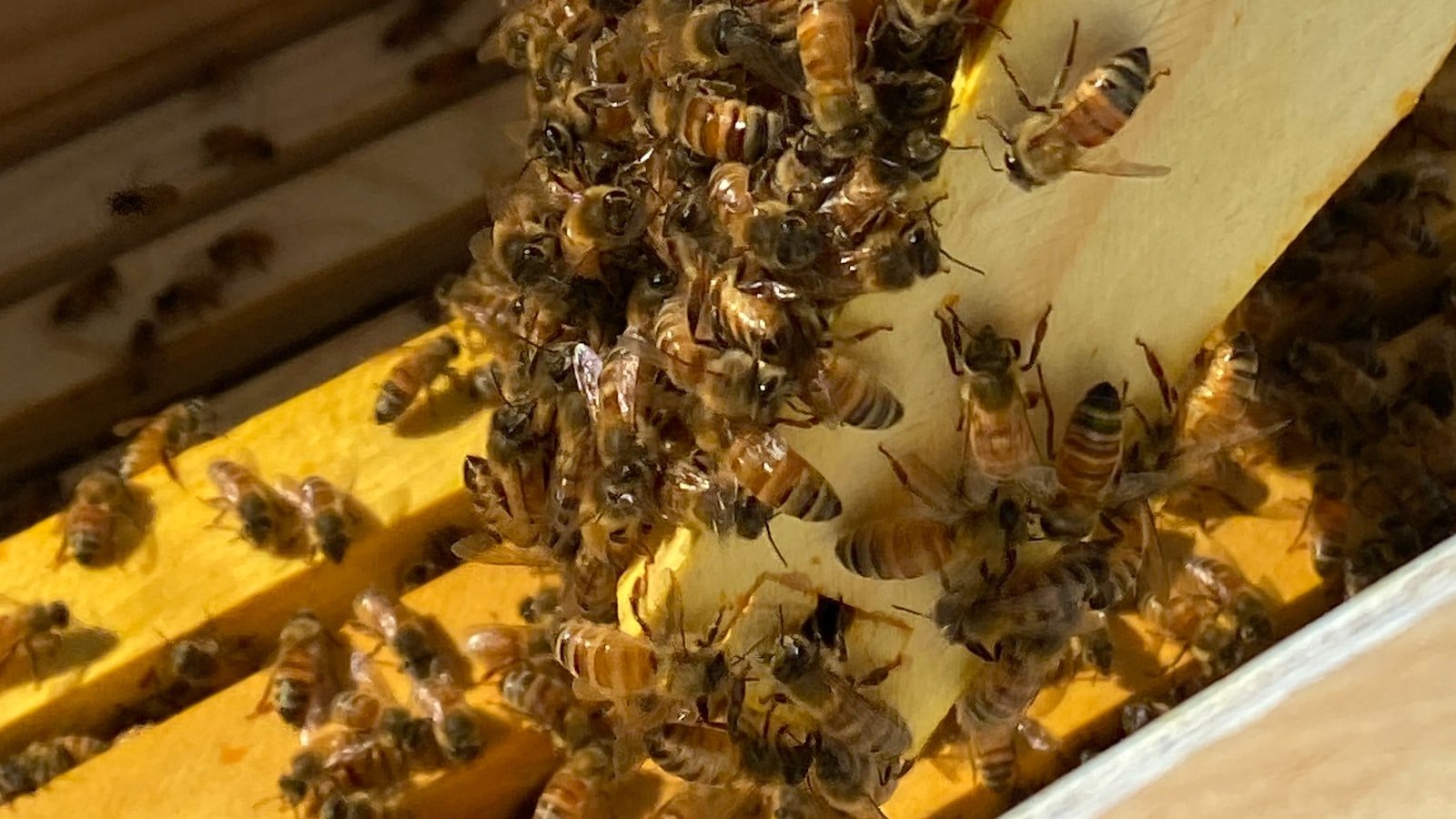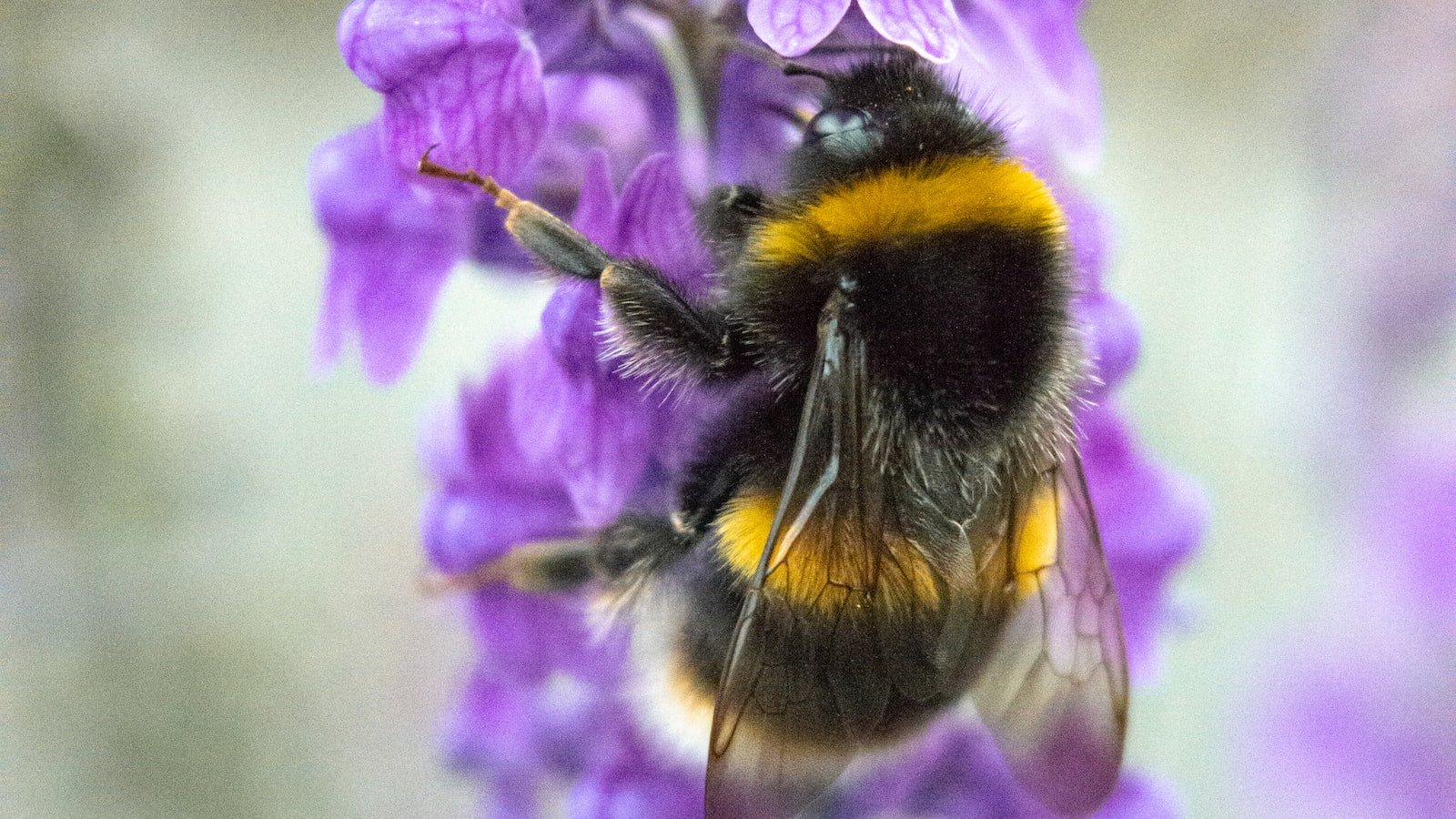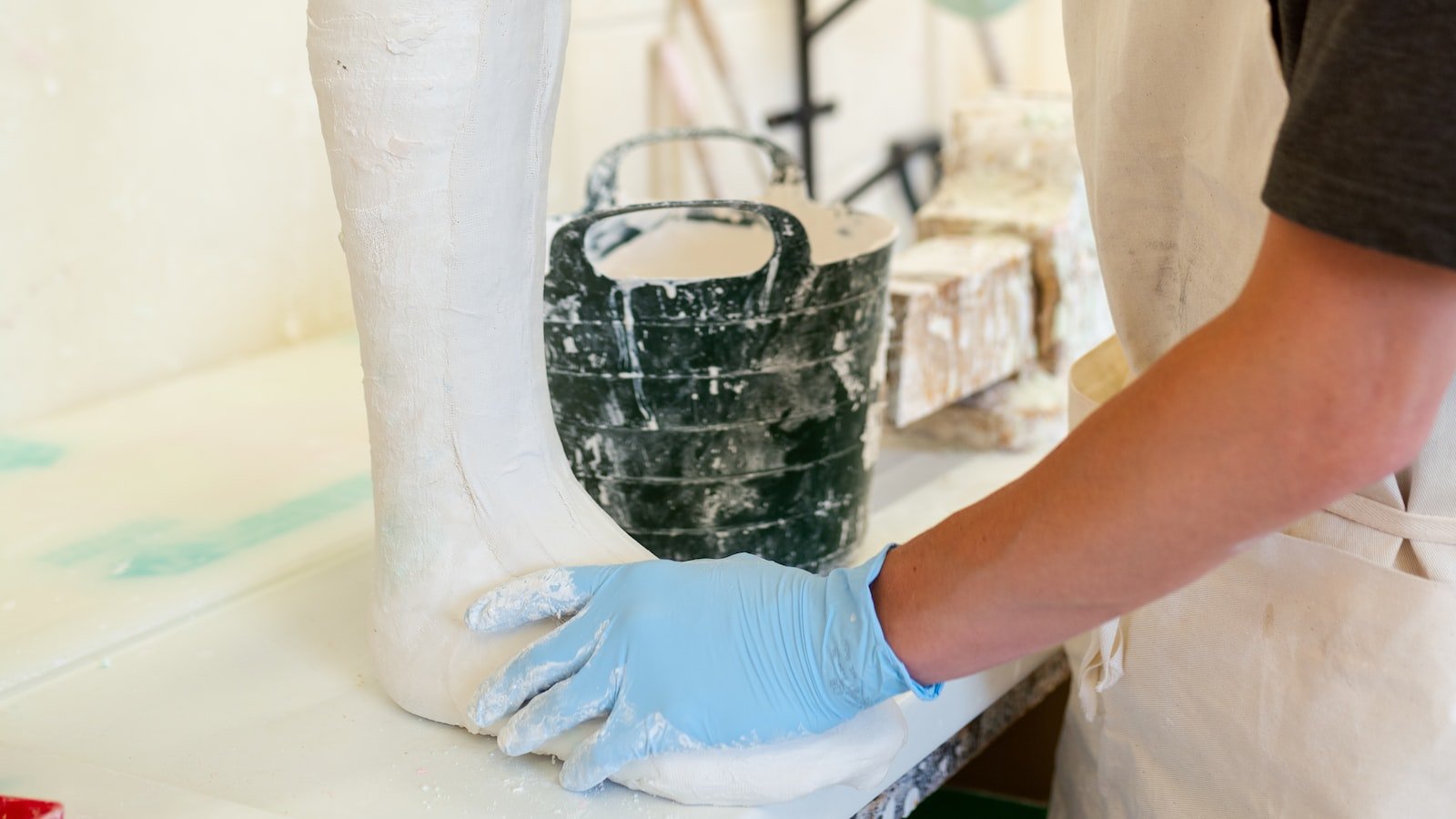Picture this: you don your protective gear, caked with the remnants of last week’s inspection, and make your way towards your hive. As you approach, the sound of busy bees fills the air, their delicate wings fluttering with purpose. But today, you have a different mission. Today, you aspire to be a beekeeping inspector who not only provides care and checks for signs of disease, but also fosters a sense of harmony and minimal intrusion within the bustling hive. So, how can you accomplish this delicate dance? In this article, we will explore ways to make your beekeeping inspections less invasive, ensuring the well-being of your precious pollinators while maintaining a respectful distance.
Table of Contents
- Minimizing Disruption to the Hive: A Guide to Non-Invasive Beekeeping Inspections
- Promoting Calmness and Comfort: Techniques for Gentle Handling of Bees during Inspections
- Strategic Timing and Frequency: Optimizing Inspection Schedule for Minimal Disturbance
- Utilizing Alternative Tools and Methods: Reducing Intrusiveness without Compromising Inspection Accuracy
- Maintaining Hygiene and Preventing Disease: Best Practices for Invasive-Free Beekeeping.
- Q&A
- Wrapping Up

Minimizing Disruption to the Hive: A Guide to Non-Invasive Beekeeping Inspections
When it comes to inspecting your bee colony, it’s crucial to prioritize the well-being of these industrious insects and minimize any disturbances to their hive. With non-invasive beekeeping inspections, you can ensure the continued health and productivity of your bees without causing unnecessary stress. Here are some tips and techniques for conducting inspections while keeping disruption to a minimum:
- 1. Be mindful of timing: Conduct inspections during mid-morning or early afternoon when the temperature is warmer and the bees are more active. Avoid inspection during cold or rainy days as this can agitate the bees and make them more defensive.
- 2. Use smoke sparingly: While smoke can help calm the bees during inspections, excessive or improper use can cause distress. Use minimal amounts of high-quality smoker fuel and focus on directing the smoke towards the entrance rather than directly into the hive.
- 3. Maintain a gentle touch: Handle the frames and components with care to avoid crushing bees or damaging their delicate comb. Slow and steady movements, using a feather-light touch, will not only prevent harm but also minimize disruption to the hive’s structure.
- 4. Limit inspection frequency: Regular inspections are essential, but excessive intrusion can stress the colony. Aim for inspections every 7-14 days during peak season, but also consider the advice of experienced, bee-friendly beekeepers in your area to adapt to the specific needs of your hive.
- 5. Practice patience: Give the bees time to acclimate and settle down after each manipulation. Rushing through an inspection can agitate the colony, resulting in defensive behavior. Take breaks between steps to allow the bees to regain their composure.
- 6. Use non-invasive techniques: Explore alternatives to traditional intrusive inspections, such as using observational methods, technology-assisted inspections, or hive monitoring systems. These methods allow you to gather information without directly disturbing the bees.
By implementing these non-invasive techniques, you can ensure that your beekeeping inspections are conducted with the utmost care and respect for your buzzing companions. Remember, a peaceful approach leads to healthier, happier bees!

Promoting Calmness and Comfort: Techniques for Gentle Handling of Bees during Inspections
When it comes to inspecting beehives, promoting calmness and comfort is crucial for both the bees and the beekeeper. By utilizing gentle handling techniques, the process can be made smoother and less stressful for all parties involved.
Here are some techniques to consider:
- Approach with confidence: Bees can sense fear and agitation, so it’s important to approach the hive calmly and confidently. Take deep breaths and maintain a relaxed posture to help keep the bees at ease.
- Smoke it up: Using a bee smoker is a common practice to calm bees during inspections. A few puffs of cool smoke near the entrance of the hive helps mask alarm pheromones, making the bees less defensive.
- Beesuit attire: Wearing appropriate protective clothing, such as a sturdy beesuit with veil, gloves, and closed-toe shoes, not only keeps the beekeeper safe but also helps reduce anxiety. Knowing you are protected can boost confidence and promote a sense of calmness.
Remember, gentle handling of bees is essential for their well-being and the success of the inspection. These techniques aim to minimize stress and promote a harmonious relationship between beekeepers and their buzzing companions.

Strategic Timing and Frequency: Optimizing Inspection Schedule for Minimal Disturbance
Optimizing Inspection Schedule for Minimal Disturbance
In order to minimize disruption and optimize efficiency, strategic timing and frequency for inspections are crucial. By carefully planning and scheduling inspections, businesses can ensure that their operations continue smoothly while reducing any disturbances to their everyday workflow.
One effective strategy is to conduct inspections during off-peak hours or non-peak seasons. This allows businesses to avoid interrupting peak production periods or causing inconvenience to customers. By choosing the right timing, businesses can minimize the impact of inspections on their overall productivity.
Moreover, optimizing the frequency of inspections is essential for maintaining a balance between proactive maintenance and operational continuity. Implementing regular inspections helps identify potential issues before they escalate into major problems, reducing the likelihood of unexpected disruptions. However, excessive inspections can lead to unnecessary downtime and decreased efficiency. By finding the right balance, businesses can ensure that the inspection schedule remains effective and minimally disruptive.
- Plan inspections during quieter periods: By carefully selecting off-peak hours or non-peak seasons, interruptions can be minimized.
- Optimize inspection frequency: Balancing proactive maintenance with operational continuity is crucial to prevent major issues while minimizing unnecessary downtime.
- Utilize technology-driven solutions: Implementing digital tools and automation can streamline the inspection process, saving time and reducing disruption.
- Communicate with stakeholders: Keeping employees and customers informed about the inspection schedule can help manage expectations and mitigate any potential disruptions.

Utilizing Alternative Tools and Methods: Reducing Intrusiveness without Compromising Inspection Accuracy
In the ever-evolving field of inspection, it is crucial to strike a balance between accuracy and intrusiveness. While traditional tools and methods have served us well, it is time to explore alternative approaches that can offer the same level of precision without compromising the customer’s experience. By embracing these innovative technologies, we can revolutionize the inspection process while ensuring minimal disruption.
Utilizing Drones:
- Using drones equipped with high-resolution cameras can eliminate the need for manual inspection in hard-to-reach or hazardous areas.
- This non-intrusive method reduces the risks associated with human involvement while capturing detailed images or videos for thorough analysis.
- In addition, drones can speed up the inspection process, minimizing downtime and increasing efficiency.
Implementing Augmented Reality (AR):
- AR technology can enhance inspection accuracy by overlaying vital information and instructions directly onto the inspection site.
- Utilizing AR glasses or headsets, inspectors can have real-time access to technical specifications, safety guidelines, or repair manuals.
- By reducing the need for physical documents or constant communication, AR minimizes intrusiveness and allows for a more focused inspection process.
Incorporating Machine Learning:
- By analyzing vast amounts of historical data, machine learning algorithms can identify patterns and anomalies, assisting inspectors in identifying critical areas more accurately.
- This intelligent technology reduces the need for invasive manual testing or excessive dismantling, improving inspection efficiency.
- Moreover, machine learning can continuously learn and adapt, enhancing accuracy and reducing the chances of oversight over time.
By embracing alternative tools and methods like drones, augmented reality, and machine learning, we can revolutionize the inspection process while minimizing intrusiveness. These innovative approaches ensure accurate and thorough inspections without compromising efficiency or customer satisfaction.
Maintaining Hygiene and Preventing Disease: Best Practices for Invasive-Free Beekeeping
Keeping your bees healthy and disease-free is essential for successful beekeeping. By following a set of best practices, you can maintain hygiene and prevent the spread of invasive pests and diseases in your apiary.
Regular Inspection and Monitoring: Conduct regular inspections of your beehives to identify any signs of disease or pests. Look for abnormalities in the brood pattern, unusual odor, or presence of mites. Monitoring the population growth and overall behavior of your bees will help you catch any problems early on.
Proper Sanitization: Maintaining a clean and sanitary environment is crucial. Make sure your equipment, including hive tools, frames, and protective clothing, are properly cleaned and disinfected after each use. This prevents the transfer of potential pathogens from one hive to another. Use a 10% bleach solution or a recommended disinfectant to ensure thorough sanitization.
Quarantine Measures: Before introducing any new bees or equipment into your apiary, establish a quarantine area. This area should be located away from your main hives to prevent any potential spread of diseases. Keep new arrivals separate for at least 30 days and monitor them for any signs of illness. This precautionary measure can help contain and eliminate any potential threats before they affect your entire bee population.
Integrated Pest Management: Implement an integrated approach to pest control by using methods such as screen bottom boards, sticky traps, and natural pest repellents. Regularly clean out debris and remove any excess honey or comb to deter pests. By taking a proactive stance against pests, you can minimize the risk of infestations and the transmission of diseases.
Education and Training: Stay up-to-date with the latest research and guidelines on bee health. Attend workshops and seminars to enhance your knowledge of beekeeping practices and disease prevention strategies. By educating yourself, you can make informed decisions and take the necessary steps to maintain the overall health and well-being of your bee colonies.
Record Keeping: Maintain detailed records of hive inspections, disease observations, and treatment methods. This documentation will help you track the health of your colonies over time and enable you to identify any recurring issues or patterns. By documenting your practices, you can make data-driven decisions for the welfare of your bees.
With these best practices in place, you can ensure an invasive-free and healthy apiary, protecting both your bees and the environment they thrive in.
Q&A
Why is it important to make beekeeping inspections less invasive?
Maintaining the health and well-being of the bees is crucial for their survival, and invasive inspections can disrupt their natural behavior and stress them out. By reducing the invasiveness of inspections, we can minimize the impact on the hive and ensure better beekeeping practices.
What are the benefits of less invasive beekeeping inspections?
Less invasive inspections allow bees to maintain their natural routines, reducing stress levels and promoting overall colony health. It also helps beekeepers build a more harmonious relationship with their bees, fostering better understanding and care for the hive.
How can I make my beekeeping inspections less invasive?
To make inspections less invasive, start by using observation techniques from outside the hive, such as watching the entrance and observing flight patterns. Additionally, use non-invasive tools like clear glass observation hives or remote cameras to monitor hive activity without disturbing the bees.
Should I limit the frequency of inspections to make them less invasive?
While regular inspections are necessary, it is crucial not to overdo it. Limiting inspections to a necessary number helps ensure that the hive’s ecosystem remains undisturbed and minimizes stress on the bees. Establishing a balanced inspection schedule based on the specific needs of your hive is key.
Are there any specific behaviors I should adopt during inspections to make them less invasive?
During inspections, it is essential to move slowly and gently, minimizing abrupt movements and noise that could alarm the bees. Additionally, using smoke in moderation and avoiding excessive handling of frames and bees will help create a less invasive environment for the colony.
What role does beekeeper experience play in making inspections less invasive?
Experience plays a vital role in making inspections less invasive. With knowledge and practice, beekeepers become more adept at reading hive signs, understanding the bees’ behavior, and conducting efficient inspections with minimal disturbance. This allows for a smoother process that greatly benefits the bees.
Can I still gather essential information without invasive inspections?
Absolutely! While less invasive inspections minimize disturbance, it’s still possible to gather essential information about the hive’s health and productivity. By carefully observing activity at the hive entrance, checking for signs of pollen and nectar collection, and conducting non-invasive hive assessments, you can acquire valuable data while respecting the bees’ needs.
What other alternative techniques can I use to reduce invasive inspections?
Utilizing integrated pest management strategies, such as using screened bottom boards or drone trapping, can help reduce the need for invasive inspections. Additionally, adopting non-invasive hive management methods, like foundationless frames or top-bar hives, can lessen the need for intrusive interventions.
Do less invasive inspections affect honey production?
Less invasive inspections can actually have a positive effect on honey production. By minimizing stress on the bees and maintaining a healthy hive, their productivity and honey production are generally enhanced. With a balanced approach to inspections, you can strike a harmonious balance between bee well-being and optimal honey yield.
Wrapping Up
As we conclude our journey into the enchanting world of beekeeping inspections, we hope you have discovered a newfound passion for your buzzing companions. Remember, their delicate harmony thrives under a gentle touch, and it is within our duty as beekeepers to find that delicate balance between observation and intrusion.
By embracing the art of less invasive inspections, we extend an olive branch to our beloved bees, fostering a relationship built on trust and respect. In doing so, we unlock the hidden gateway to their wondrous world, where secrets of nature unfurl amidst the hum of hundreds of tiny wings.
As you embark on your future inspections, let patience be your guide, and curiosity be your companion. Walk lightly among the hives, as if treading upon sacred ground, for it is within these humble wooden structures that countless miracles unfold. Allow yourself to be captivated by their intricate dance, where each bee plays a vital role in an intricate symphony of survival.
For you, dear reader, have now become the humble custodian of these marvelous creatures. In your hands lies the power to safeguard their future and witness the fruits of their tireless labor. Remember to embrace the notion that it is not solely the honey that rewards us; it is the profound connection with the ancient rhythm of nature that fills our hearts with infinite joy.
With every beekeeping inspection, we have the opportunity to learn, to grow, and to become stewards of a bygone era. As you bid farewell to this article, armed with knowledge and respect, may your journey into beekeeping be less invasive and infinitely rewarding.
So, go forth, intrepid beekeeper, and let the dance commence. Together, we shall preserve the delicate balance between honey, harmony, and heart.
As an affiliate, my content may feature links to products I personally use and recommend. By taking action, like subscribing or making a purchase, you’ll be supporting my work and fueling my taco cravings at the same time. Win-win, right?
Want to read more? Check out our Affiliate Disclosure page.